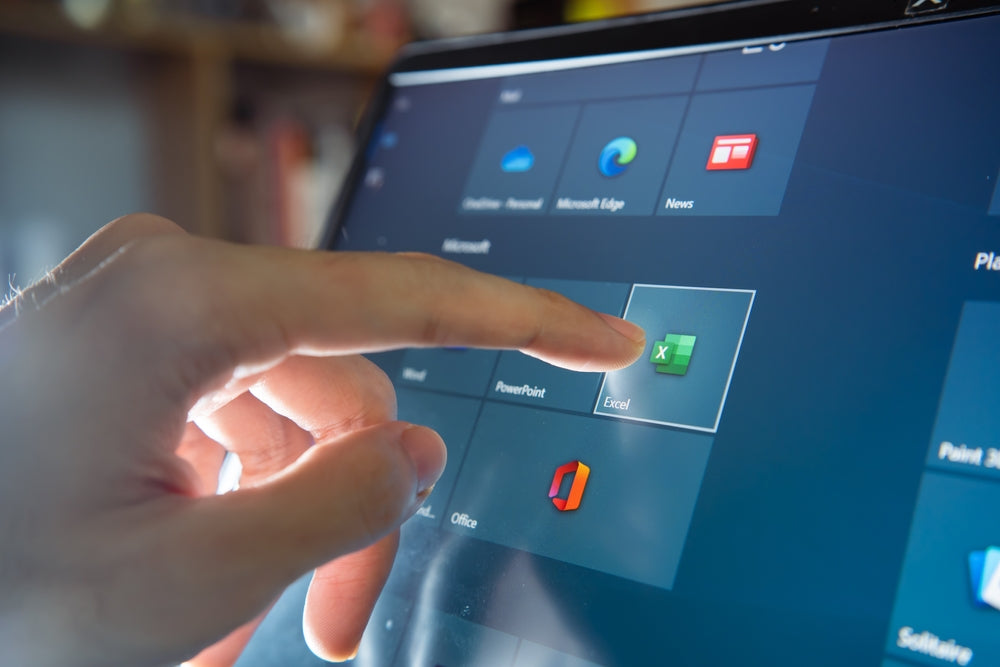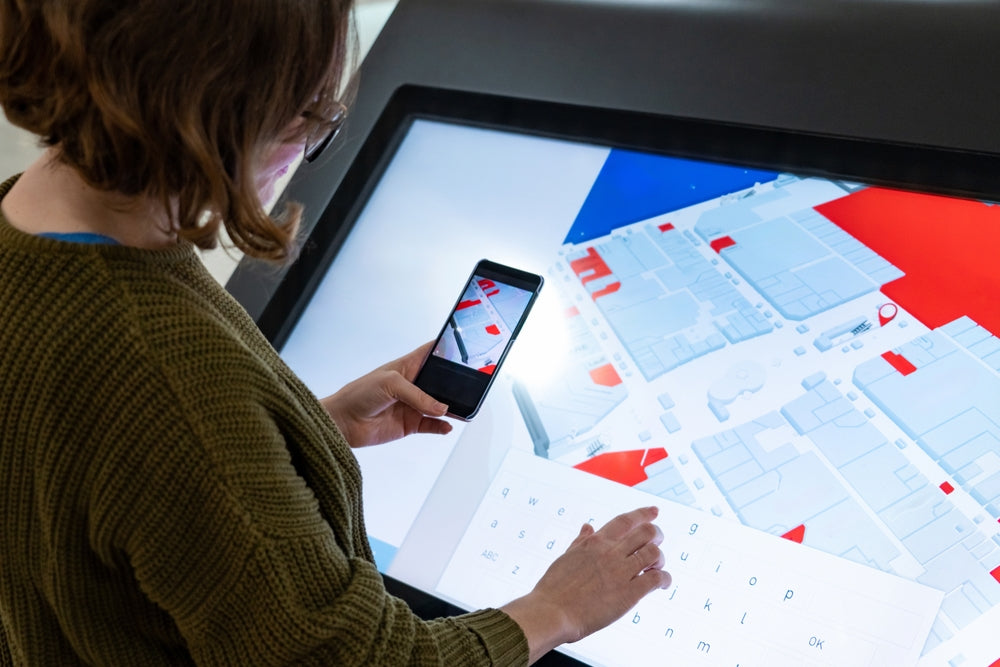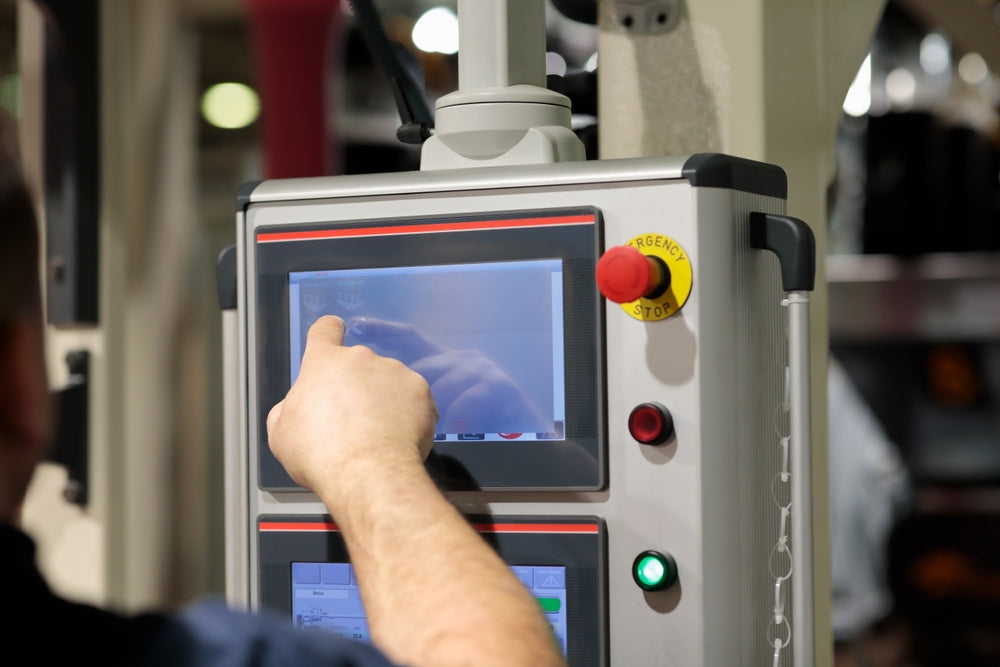Resistive touch tech uses two conductive layers—an ITO-coated glass top and a PET film bottom—separated by micro-spacers. Pressing bends the top layer to contact the bottom, altering resistance; controllers calculate coordinates via X/Y voltage gradients. It works with gloves/styluses, boasting ~15ms response, typical in ATMs for durability.
What is Resistive Touch Technology?
Despite the dominance of sleek, multi-touch capacitive screens in consumer electronics, resistive touch technology remains a workhorse, powering an estimated 30-40% of all touch interfaces in industrial, medical, and point-of-sale systems globally. Its enduring relevance, nearly five decades after its inception, is a testament to a fundamentally simple yet highly effective pressure-based sensing mechanism. At its core, a resistive touch sensor is a sandwich of two key layers. The top layer is typically a flexible 0.125-0.188 mm thick polyethylene film, while the bottom is a rigid substrate, often glass or polycarbonate around 0.5-1.1 mm thick. Both are coated with a transparent conductive layer of Indium Tin Oxide (ITO), which has a surface resistivity between 100 and 500 ohms per square. These layers are held apart by microscopic 50-100 micron tall insulating spacer dots, spaced 2-5 mm apart, ensuring they only make contact under direct pressure. This straightforward construction enables a technology that is not only 60-80% cheaper to manufacture than comparable-sized capacitive solutions but also uniquely versatile, responding to any input object with a force as light as 10-20 grams.
In the most common four-wire configuration, a constant voltage, typically 5V DC, is applied sequentially across the X and Y planes. When pressure is applied—say, with a stylus exerting 50-100 grams of force—the flexible top layer deforms, creating a contact point. This action forms a voltage divider circuit. The controller instantly measures the resulting voltage, which is directly proportional to the touch point's position. For instance, a voltage reading of 2.5V would indicate a touch precisely at the 50% mark along that axis. This process, repeated for both axes in under 10-20 milliseconds, yields highly accurate X/Y coordinates with a linear accuracy of ±1.5% and a resolution exceeding 4096x4096 points. The technology's reliance on physical contact makes it inherently resistant to environmental factors like moisture or dust, allowing it to operate reliably in temperatures from -20°C to +70°C and at up to 85% relative humidity, conditions that can easily disrupt capacitive sensors.
The five-wire system, for example, moves the voltage gradients to the more durable bottom layer, using the top film solely as a voltage probe. This dramatically improves lifespan, allowing for over 10 million touches at a single point compared to the 1 million touches of a standard four-wire model. Eight-wire systems incorporate additional sensing wires to compensate for drift in the ITO layer's sheet resistance over time and temperature fluctuations, maintaining a high positional accuracy of ±1.0% throughout the product's 5-7 year operational life.
|
Sensor Type |
Typical Linear Accuracy |
Expected Lifespan (Touches) |
Key Differentiator |
Common Substrate Thickness |
|---|---|---|---|---|
|
Four-Wire |
±1.5% |
~1 Million |
Lowest Cost, Simpler Circuitry |
Film: ~0.175mm |
|
Five-Wire |
±1.5% |
>10 Million |
Enhanced Durability (Wear on Bottom Layer) |
Glass: ~1.1mm |
|
Eight-Wire |
±1.0% |
>10 Million |
High Stability (Resistance Drift Compensation) |
Glass: ~1.1mm |
The need for physical flexion results in approximately 75-80% optical clarity, slightly lower than capacitive screens, and the flexible surface is susceptible to scratches from sharp objects with a hardness exceeding 3H on the pencil scale. However, for a vast range of applications where cost, input flexibility, and resilience are paramount, the <$20 price point for a standard 10.1-inch resistive touchscreen continues to make it an irreplaceable and highly practical solution.
How Does Resistive Touch Work?
Unlike capacitive screens that detect the electrical properties of your finger, a resistive system only cares about the ~2-5 grams of force required to bridge a microscopic gap. The entire process, from touch contact to coordinate calculation, typically completes in under 20 milliseconds, achieving a linear accuracy of ±1.5% across the screen's surface. This reliability stems from a straightforward electromechanical process that hasn't needed a fundamental change in over 40 years, precisely because its ~80% cost reduction compared to capacitive alternatives makes it indispensable for single-touch applications.
The top layer is a flexible polyester film, usually 0.125 to 0.2 mm thick, coated on its underside with a transparent conductive layer of Indium Tin Oxide (ITO). The bottom layer, typically a rigid 1.1 mm thick glass substrate, is also ITO-coated and faces upward. These two conductive surfaces are held precisely ~50 microns apart by thousands of microscopic insulating spacer dots. When you press the screen with a force of just 10-20 grams, the flexible film deforms, forcing the ITO coatings to make contact at exactly that point.
The most common method, used in four-wire resistive screens, involves a two-step voltage measurement process. First, to find the X-coordinate, a precise 5V DC potential is applied across the left and right edges of the bottom layer, creating a uniform voltage gradient from one side to the other.
The voltage at any point on this layer is directly proportional to its horizontal position; the far left might be 0V, the center 2.5V, and the far right 5V.
The controller measures the voltage at the touch point through the top layer, and a reading of, for example, 3.2V would instantly correlate to a specific X-coordinate. The process then flips 90 degrees: voltage is applied to the top and bottom of the bottom layer to create a vertical gradient, and the voltage is measured again to pinpoint the Y-coordinate. This entire cycle, polling for touches at a frequency of ~50 Hz, happens in a blink, making the interaction feel instantaneous. While effective, the four-wire design's constant current can degrade the ITO coating on the flexible top layer over its lifespan of approximately 1 million touches at a single point.
The flexible top layer is used only as a passive voltage probe, meaning the wear is distributed across a wider area, extending the operational life to over 10 million touches. Even more advanced eight-wire systems add two extra sensing wires to continuously monitor and compensate for any drift in the ITO's sheet resistance, which can fluctuate with temperature variations of up to ±30°C, ensuring consistent accuracy of ±1.0% throughout the product's 5 to 7-year service life.
Advantages of Resistive Touch Technology
In an era dominated by sleek capacitive screens, resistive touch technology secures its 30-40% market share in specific sectors by excelling where it matters most: real-world practicality and cost. The financial argument is undeniable; a standard 7-inch resistive touchscreen can be integrated into a BOM (Bill of Materials) for under $15, which is often 60-80% less than a comparable projected capacitive (PCAP) unit. This straightforward pressure-based mechanism isn't just cheap—it's incredibly robust, operating reliably in environments with >85% humidity and temperature swings from -20°C to +70°C. Its ability to function with any object, requiring a minimal actuation force of just 10-20 grams, makes it the undisputed choice for applications where gloves, styluses, or harsh conditions are the norm, not the exception.
The advantages of this technology can be broken down into several key areas:
-
Unbeatable Cost-Effectiveness: The manufacturing process for resistive touch panels is mature and highly optimized, leading to significant savings. The core materials, such as the PET film for the top layer and standard ITO coating, are inexpensive. This results in a per-unit cost that is typically 40-60% lower than capacitive alternatives. For a company deploying 50,000 point-of-sale terminals, this can translate to a savings of over $500,000 on the touch component alone, drastically improving the project's ROI. The simplicity also extends to the controller IC, which is less complex and cheaper than those required for multi-touch capacitive screens.
-
Simplified Integration and Reliability: Engineers value the predictable and straightforward nature of resistive technology. The interface is usually a simple 4-wire or 5-wire analog connection to a controller that communicates via standard protocols like SPI or I2C. This reduces development time and complexity, allowing a functional touch interface to be implemented in as little as 2-3 weeks of engineering effort. There is no need for complex tuning or calibration for different materials, a common requirement with capacitive sensors. The mean time between failures (MTBF) for a well-built five-wire resistive screen can exceed 50,000 hours of continuous operation, thanks to the lack of active components on the sensor itself.
-
Universal Input Compatibility: This is perhaps the most significant practical advantage. A resistive screen doesn't care about the electrical properties of the input; it only responds to pressure. This means it works perfectly with a 5-mm diameter plastic stylus for precise menu selection, a gloved hand wearing up to 2.5 mm of insulating material, or even the tip of a pen. In medical settings, this allows the screen to be reliably used and then disinfected with 70% isopropyl alcohol wipes without affecting functionality. This input agnosticism is a physical characteristic that capacitive technology simply cannot replicate.
-
High Single-Point Accuracy: For applications that require precise, deliberate input—like tapping small buttons on an HMI or signing for a package—resistive touch offers excellent accuracy. The typical linear error is less than ±1.5%, with a resolution that can exceed 4096 x 4096 points on higher-end models. This means on a 10.1-inch (1280x800 pixels) display, the touch point is consistently accurate to within ±1 mm, providing the precision needed for industrial control systems and signature capture without the "fat finger" inaccuracies that can plague capacitive screens. The technology scans for touch at a rate of ~50-100 Hz, ensuring there is no perceptible lag for single-point interactions.
Limitations of Resistive Touch Technology
The multiple layers and microscopic air gap typically result in only 75-80% light transmission, compared to over 90% for modern capacitive screens, leading to a dimmer appearance or requiring a 20-30% brighter backlight, which increases power consumption. Furthermore, the flexible top layer, often a 0.175mm thick PET film with a surface hardness of about 3H on the pencil scale, is highly susceptible to scratches from sharp objects, directly impacting longevity and clarity over its operational life, which is rated for approximately 1 million actuations at a single point for a basic four-wire design.
The constraints of this technology can be categorized into several critical areas:
-
Inherent Lack of Multi-Touch Capability
-
Reduced Sensitivity and Mechanical Wear
-
Limited Environmental and Optical Durability
The most prominent limitation in today's interactive landscape is the complete inability to detect more than one touch point simultaneously. The core voltage-divider mechanism can only calculate a single X and Y coordinate pair. This makes gestures like two-finger pinch-to-zoom or three-finger swipe completely impossible. For applications requiring any level of modern user interaction, this is a deal-breaker. The controller's scanning algorithm is designed to identify a single touch point with a response time of 10-20 milliseconds, and if two points are pressed, it will typically either register an average point between them or fail to respond altogether.
This fundamental restriction means that for any project where intuitive, multi-finger gestures are a requirement, resistive technology is immediately disqualified, with projected capacitive (PCAP) being the only viable alternative.
Activation requires a minimum force, typically 10-20 grams, to reliably bridge the gap between the two ITO layers. This is noticeably less sensitive than capacitive touch, which responds to mere proximity. Over time and millions of press cycles, the microscopic spacer dots and the ITO coating itself can suffer from wear, especially in four-wire designs. The contact area may experience a 5-10% increase in activation force required after several hundred thousand cycles. 
Applications of Resistive Touch Technology
Despite the prevalence of capacitive screens in consumer electronics, resistive touch technology maintains a 30-40% market share in specific industrial and commercial sectors where its unique characteristics provide unbeatable practical advantages. Annual global shipments still exceed 50 million units, primarily driven by applications where cost, input flexibility, and environmental resilience outweigh the need for multi-touch or superior optical clarity. The technology's ability to function with an activation force of just 10-20 grams and its compatibility with any object—from a 2mm diameter stylus to a gloved hand—makes it indispensable in environments where capacitive screens would fail. This practical utility, combined with a 60-80% cost advantage over comparable capacitive solutions, ensures its continued dominance in fields ranging from factory automation to point-of-sale systems, where 5-7 year product lifecycles and under $20 component costs are critical budget considerations.
In industrial automation, resistive touchscreens are the default interface for over 70% of Human-Machine Interfaces (HMIs) controlling PLCs and machinery. These devices, typically featuring 5 to 15-inch displays, are subjected to harsh conditions including metal shavings, chemical splashes, and operators wearing thick >2mm insulated gloves. The screen's surface, often made of 3H hardness PET, can withstand millions of presses and is easily sealed to meet IP65 or NEMA 4/12 standards for dust and water ingress. The ±1.5% linear accuracy ensures reliable selection of small on-screen buttons, a critical feature for precise machine control.
The key requirement here is the ability to be used and then disinfected repeatedly with 70% isopropyl alcohol wipes, a common practice that can degrade the coatings on capacitive screens over 6-12 months of use. A medical-grade resistive touchscreen can endure thousands of cleaning cycles without degradation. Furthermore, the ~20-gram activation force allows for precise input with a stylus for data entry, even when the clinician is wearing latex or nitrile gloves that are 0.1-0.2mm thick. The mean time between failures (MTBF) for these medical-grade panels often exceeds 80,000 hours, ensuring reliability in 24/7 hospital operations where a screen failure could have critical consequences.
|
Application Sector |
Typical Screen Size |
Key Environmental Requirement |
Primary Input Method |
Cost Advantage vs. Capacitive |
|---|---|---|---|---|
|
Industrial HMI |
7" - 15" |
Glove use (>2mm), IP65 Sealing |
Gloved hand, Stylus |
60-70% lower |
|
Medical Devices |
8" - 12" |
Chemical resistance (Alcohol wipes) |
Gloved hand, Stylus |
50-60% lower |
|
Point-of-Sale (POS) |
10" - 15" |
High scratch resistance, >1M touches |
Finger, Stylus (signature) |
70-80% lower |
|
Automotive (Non-infotainment) |
6" - 8" |
Extreme temps (-30°C to +85°C) |
Finger (with pressure) |
60-75% lower |
In the retail and hospitality sectors, point-of-sale (POS) terminals are a bastion for resistive technology. These systems experience hundreds of touches per hour and require a surface that can withstand constant use, including signature capture with a stylus. The low component cost of a resistive screen, often under $15 for a 10.1-inch panel, is a decisive factor for businesses deploying thousands of terminals. Similarly, in automotive applications beyond the central infotainment system—such as climate control panels or rear-seat entertainment—resistive touch provides a reliable and cost-effective interface that operates flawlessly across a -40°C to +85°C temperature range, a specification that adds significant cost to capacitive alternatives.
Read more

Major touch technologies include capacitive (smartphones, detecting 5+ fingers via body charge with ~10ms response) and resistive (ATMs, pressure-activated with 80% transmittance). Infrared variant...

Capacitive touch technology uses a conductive glass layer with micro-electrodes; touching it with a finger (which holds charge) disrupts the screen’s electrostatic field. Controllers detect these c...



Leave a comment
This site is protected by hCaptcha and the hCaptcha Privacy Policy and Terms of Service apply.